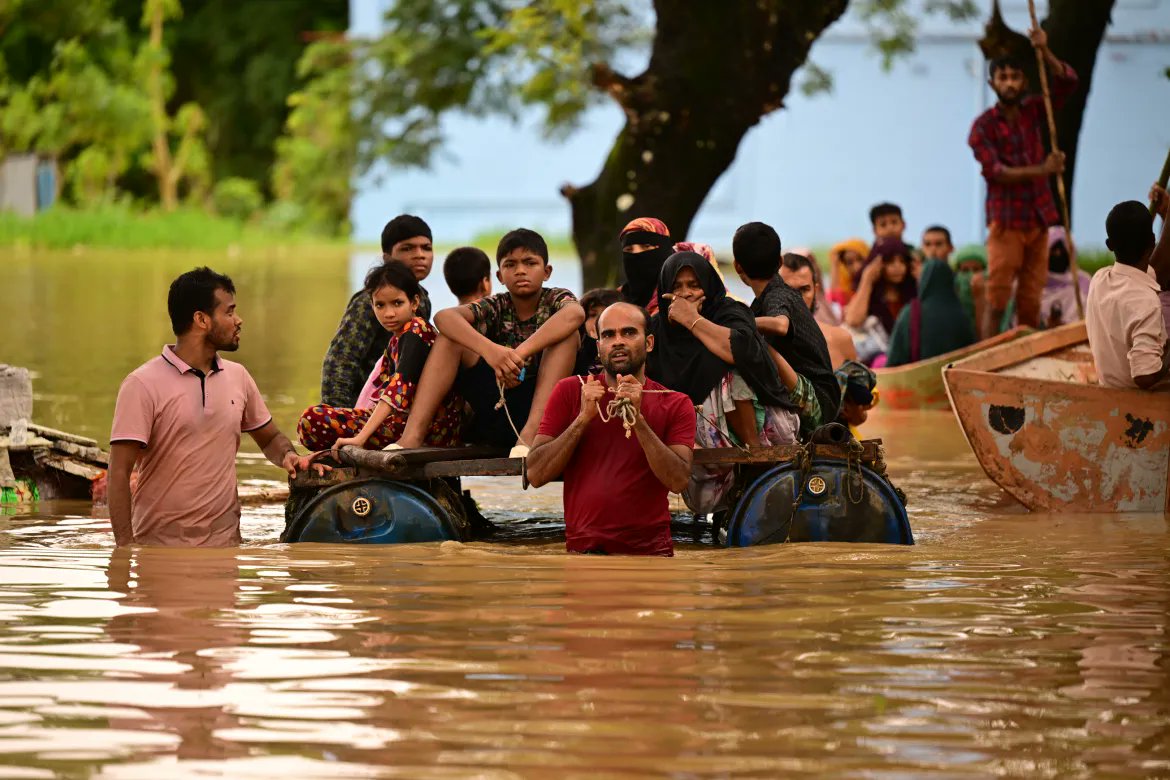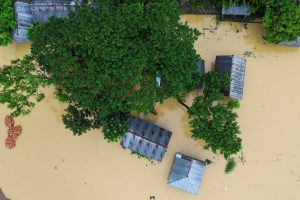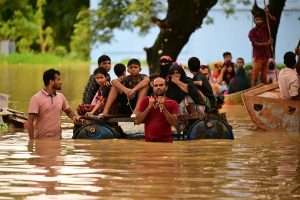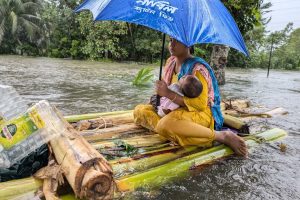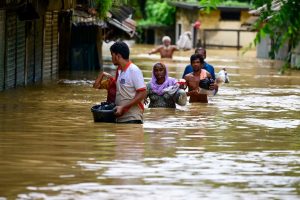Date: August 23, 2024
Sylhet, Bangladesh — At least 13 people have been killed, and over 4.5 million others have been affected by severe flooding caused by torrential rains in eastern Bangladesh. The region has been grappling with the catastrophic consequences of the deluge, which has inundated vast areas, displacing thousands and disrupting livelihoods.
The floods, which began earlier this week, have submerged homes, farmlands, and infrastructure across several districts, including Sylhet, Sunamganj, and Moulvibazar. Rescue operations are underway, with local authorities and relief organizations working tirelessly to provide assistance to those stranded and in need.
In Sylhet, one of the worst-hit areas, entire villages have been swallowed by floodwaters, forcing residents to seek refuge on rooftops and elevated areas. The situation has been exacerbated by the overflowing of major rivers, which have breached embankments, sending torrents of water into populated regions.
Impact on the Population
The sheer scale of the disaster is staggering. Over 4.5 million people are currently facing the harsh realities of the flood, with many cut off from essential services, including clean water, food, and medical aid. The government has declared the situation a national emergency and has appealed for international assistance to manage the crisis.
“The water came suddenly, and within hours, our entire village was underwater,” said Rahman, a resident of Sylhet, whose home was destroyed by the floods. “We had no time to save anything. We just ran for our lives.”
The death toll is expected to rise as rescue teams continue to search for those missing and trapped in remote areas. Many of the fatalities have been attributed to drowning, landslides, and collapsed structures.
Ongoing Rescue and Relief Efforts
The Bangladeshi government, along with various non-governmental organizations, has mobilized emergency response teams to deliver food, water, and medical supplies to the affected regions. However, access to some areas remains challenging due to the extent of the flooding and damaged infrastructure.
“Relief efforts are ongoing, but the situation is dire. We are doing everything we can to reach those in need,” said a spokesperson from the Bangladesh Red Crescent Society.
In addition to immediate relief efforts, concerns are mounting over the long-term impact of the floods. The destruction of crops and livestock has raised fears of a potential food shortage in the coming months, while the spread of waterborne diseases poses a significant health risk to the affected population.
Global Response and Calls for Aid
International aid agencies have also stepped in to support the relief operations, with several countries pledging financial and material assistance to Bangladesh. The United Nations has issued a statement expressing solidarity with the people of Bangladesh and urging the global community to provide urgent help.
As the rains continue, the full extent of the disaster is yet to be realized. The people of eastern Bangladesh are bracing for further challenges as they navigate the aftermath of one of the worst floods to hit the region in recent years.
In Pictures: The Devastation Unfolds
The images show the heartbreaking reality faced by millions in eastern Bangladesh, with scenes of despair, resilience, and hope amidst the unfolding tragedy. These pictures serve as a poignant reminder of the vulnerability of communities in the face of natural disasters and the urgent need for collective action to address the crisis.
This article captures the gravity of the situation in eastern Bangladesh, where heavy rains have triggered devastating floods, causing significant loss of life and affecting millions. The focus is on the human impact, ongoing relief efforts, and the need for global support in the face of this disaster.

